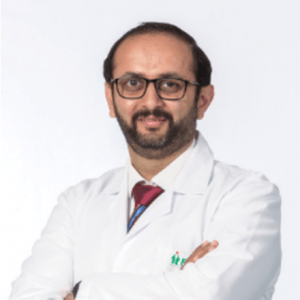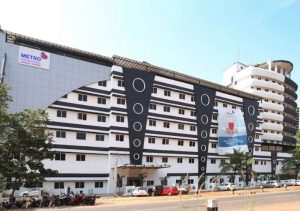Skin Transplant / Grafting
Skin grafting, which can also be referred to as ‘skin transplant’, is a surgery done to improve a damaged part of the skin, by transplanting a healthy patch of skin from one area to mend up the affected area. This surgical procedure Read More
Top Doctors For Skin Transplant / Grafting Treatments
Top Hospitals For Skin Transplant / Grafting Treatments
Skin Transplant / Grafting
- Skin graft by source
- Skin graft by meshing.
- Consult with your surgeon
- Discuss your medical record and condition, the risk, your allergies, the medications you take, etc., for advice on how to go about it, and what and what not to drop.
- Select your donor type and site.
- You and your surgeon should discuss on the type of surgical procedure appropriate for you and you can choose a donor site you are comfortable with, under your doctor’s guidance.
- Do not take medications that prevent blood clots, such as aspirin and ibuprofen.
- Quit any substance, such as tobacco, nicotine, alcohol, abusive drugs, which can prevent your skin graft from healing faster.
- From midnight on the day of the surgery, you are expected to eat or drink nothing, to prevent nausea and choking when anesthesia is administered to you.
- It is advisable to bring a support family member or friend when coming in for the surgery as you will require assistance once the skin graft is done.
- An intravenous (IV) line with be inserted into you transmit fluids and medicines necessary for you all through the surgery.
- The affected/damaged area will be cleaned with an antiseptic.
- Anesthesia will be administered to you depending on the surgery you are receiving. It can be local, regional or general anesthesia.
- The scar tissue is removed to reveal a fresh wound where the healthy patch will be placed.
- The affected area will be measured and traced.
- The donor site will be accessed and the pattern of the affected area will be traced over it.
- With a scalpel, according to the type of graft carried out, the patch of skin from the donor site will be detached and placed over the affected area.
- The newly placed skin over the affected area will be position, meshed, and sutured/glued in. And next, the donor site will be stitched back together.
- Both stitched, the areas will be wiped clean and a pressure bandage will be placed over them to assist in healing and to prevent infection.
- Wear a pressure bandage over them for 1-2 weeks to enable new blood vessels to grow and form new skin around the incisions. But make sure to change them every day in order keep the incisions clean and dry and free from infections.
- When taking your bath, make sure to keep your sutures safe from getting wet. It is better to towel bath, rather than sponge bath to avoid water flowing onto the incisions.
- Moisturize the growing skin with mineral oils and positions every day for the next 3-5 months.
- Clean the areas with antiseptics before re-dressing them.
- Do not pick on the hard-layered tissue forming over the sites, they help to protect the wound.
- Keep the sites away from any traumatic experience like a bang, blow, or exercise, to prevent a stretch in the area that can lead to a fresh injury. For the next 3-5 weeks, guard the areas protectively.
- Protect the graft from prolonged sunlight. Use sunscreen to shade the sites from the sun.
- Always make sure to check if the sites are healing well and having good blood flow. When they are healing properly, they will have a healthy pink colour.
- Go in for regular hospital visits, for your surgeon to check the healing process of the sites and make sure there are no complications.
- Shortness of breath, chest pain or cough.
- Nausea
- Possible signs of infection such as high fever and bad smelly discharge from the draft, often whitish or yellowish in color.
- General body weakness – aches in the head and muscles
- Swelling and puffiness of wound which increases the pain of the wounds.
- Bleeding that cannot be stopped with a pressure bandage.
- Skin uneven discoloration.
- Nerve or blood vessel damage at either or both sites.
- Scarring, causing an unusual rough skin appearance. May be due to the formation of blood hematose, other than blood vessels.
- There’s the presence of an infection on the draft.
- The fluid or blood underneath the graft was too much.
- There’s poor blood flow to the grafted.
Symptoms
As per the reasons for a skin grafting, anyone who wants to cover up a damaged skin, wound/ulcer, or perform a surgery that requires a skin graft, Is eligible for the surgery.
Causes
A skin transplant is done for the following reasons:
- For a part of the body with skin which has lost its protective covering due to sicknesses that ruins the skin.
- To cover up burns, wounds, and scars.
- To improve on scar tissues that are right and restrict ease in movement.
- To close up unhealing skin ulcers such as diabetic, venous, and pressure ulcers (bed sores)
- A step required in a skin cancer surgical procedure.
- For reconstructive and cosmetic surgeries.
- For surgeries that need skin to heal up, like amputation.
- For vitiligo, that is patchy loss of skin pigmentation.
FAQ
1.How long does a skin graft take to heal?
The healing process is faster in skin graft than in other surgeries.
While a donor site takes within 1-2 weeks to heal, a graft site takes at least 3-5 weeks to heal because the skin has to grow and link the graft to the surrounding skin. All you have to do is clean and treating the skin regularly and keeping it dry and in a dressing till it heals. Also avoid doing any activity that can strain and stretch the wound and recreate an injury.
2. What are the risk factors that can drive up skin graft complications?
The factors that can increase the rate of skin transplant complications include:
a) The patient's age
Infants and people of age 60 and above, have more tendency of developing skin complication than teenagers and the middle-aged.
b) Diabetes
People with diabetes have a low rate in healing. Due to this, they are very susceptible to developing skin graft complications.
c) Poor health conditions
Health conditions that mostly affect the immune system, breaking it down, do not allow skin graft heal as fast as it should and with time, it can lead to complications and graft denial.
d) Certain medication usage
Drugs like aspirin and ibuprofen reduce the rate at which blood clots. Taking them before and/or after a skin graft can bring up complications.
e) Smoking and alcohol
Substances contained in cigarettes and alcohol can prevent a skin graft from healing up quickly.
3. Can you walk after a skin graft?
It is advisable to limit your movement around as your graft heals up, in order to avoid straining and stretching the region and inflicting fresh injuries, especially if the areas are around your leg, arms, feet, hands, and stomach. Stay at home instead expect on your routine medical checks as your surgeon is most likely to recommend, until you are fully healed.
4. What is the success rate of skin grafting?
Research informs us that the total success rates, as at last rated, stands at 94%. This means the skin grafting over time has been significant in aiding people feel good about themselves with very little risk attached to it.
5. What is an Integra and Primatrix Graft?
Both skin grafts are products made artificially to help regenerate skin on damaged areas of a patient's body.
Integra is a two-layered skin graft product for skin replacement. Made out of the processed and sterilized tendons of cows and sharks cartilages, the product is attached over your wounds as a graft, especially large wounds, as a support for blood vessels and new skin tissue to grow into. Once the is done, the silicone foil on its top layer is removed and a donor skin graft is placed over it to layer it up.
PriMatrix is a special skin repair product made of bovine skin which contains collagen, aiding dermal regeneration and healing for every damaged and wounded skin. It is made out of the skin and cartilages of cows/cattles, and then processed and sterilized so it can be used on humans.
Both products are mostly used in reconstructive and extensive burns surgeries. Used on very large areas where a recipient does not have enough donor skin to cover, to heal by/close up by regrowing the skin on the damaged parts. Also, they are used in ulcers, such as diabetic foot ulcers, that are resistant to treatment.
































